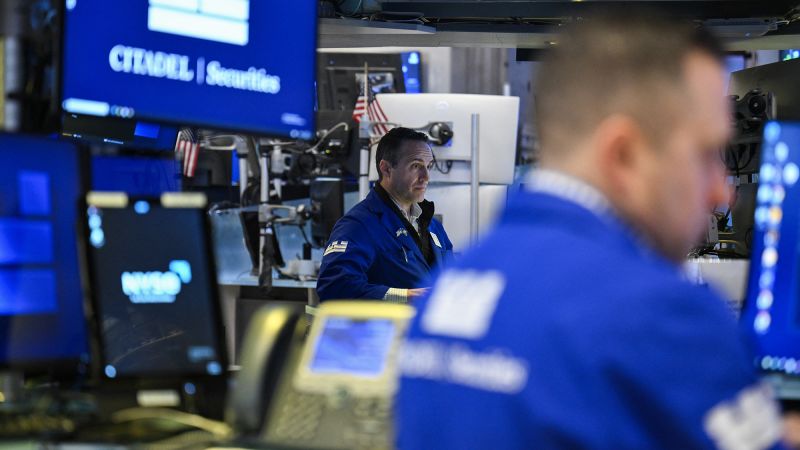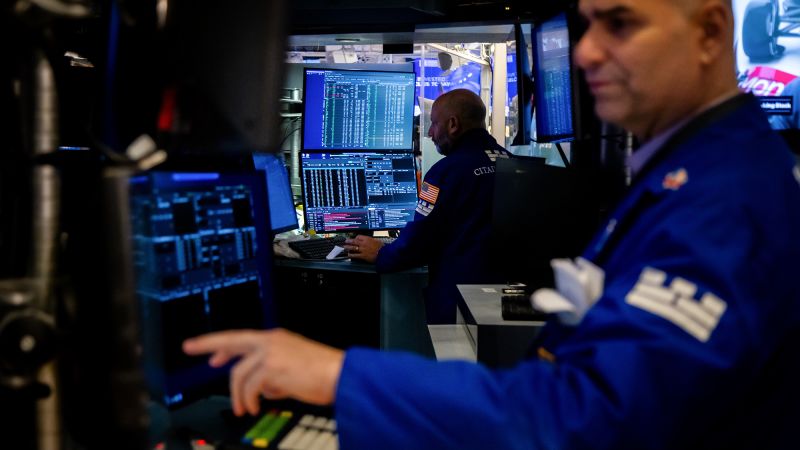April has proven to be a tumultuous month for financial markets, with a significant economic report revealing a contraction for the first time in years. This announcement has sent shockwaves through Wall Street, affecting investor sentiment and market performance.
Market Performance Overview
Despite a rocky start, the S&P 500 and Dow Jones Industrial Average managed to recover from early morning losses, ultimately closing in positive territory. The Dow rose by 142 points, or 0.35%, while the S&P 500 saw a modest increase of 0.15%. However, the tech-heavy Nasdaq Composite experienced a slight decline of 0.09%.
- Key Highlights:
- The S&P 500 and Dow enjoyed a seven-day winning streak, their best rally this year.
- Both indexes closed April lower, marking their third consecutive month of losses, the longest streak since 2023.
- The Nasdaq, which faced a bear market earlier in the month, ended with a 0.85% gain for April.
Economic Indicators and Investor Sentiment
On Wednesday, stocks dipped as new data from the Commerce Department indicated that the U.S. economy shrank in the first quarter, a worrying sign for many. The uncertainty stemming from Trump’s tariffs has created a challenging environment for businesses and consumers alike.
However, stocks rebounded slightly later in the day as inflation data suggested a slowdown in price increases for March, providing a glimmer of hope for investors. Despite this, the potential impact of tariffs on future prices looms large.
- Economic Data Points:
- The Federal Reserve Bank of Atlanta predicts a 2.7% decline in U.S. GDP for the first quarter of 2025, the worst quarter since the peak of the COVID-19 pandemic.
Trump’s Tariff Policies and Market Reactions
April saw significant volatility, particularly after Trump announced his "reciprocal" tariffs on April 2. Initially, the S&P 500 plummeted by over 11% in just eight days. Following a tumultuous bond market and a temporary pause on most tariffs, the index managed to regain some ground but ultimately closed the month down by approximately 0.76%.
In response to the market’s fluctuations, Trump took to social media, asserting, "This is Biden’s Stock Market, not Trump’s." He emphasized that the economic challenges were not due to tariffs but rather a result of his predecessor’s policies, calling for patience as the economy adjusts.
Experts Weigh In on Market Trends
Investment experts are divided on the outlook for the market. Kelly Bouchillon, a senior partner at Sound View Wealth Advisors, expressed skepticism about a quick recovery, stating that uncertainty surrounding tariffs remains a significant concern.
Comparatively, the stock market had a more robust performance during Trump’s first term, with gains of 5% in the first 100 days and 8.5% during President Biden’s initial term. The S&P 500 saw impressive growth during Biden’s last two years, a trend not seen in decades.
Job Market and Hiring Trends
In addition to market volatility, hiring slowed significantly in April, with the private sector adding only 62,000 jobs, a steep decline from the 147,000 jobs added in March, according to ADP data. Nela Richardson, chief economist at ADP, remarked, “Unease is the word of the day,” reflecting the prevailing sentiment among economists.
Looking Ahead
As investors navigate this unpredictable landscape, the key question remains: Will the U.S. economy slip into recession or manage to stabilize? John Higgins, chief markets economist at Capital Economics, noted that the behavior of U.S. markets, particularly Treasuries, will play a crucial role in shaping the future.
- Market Indicators to Watch:
- Treasury yields have fluctuated significantly, dipping below 4% and then rising above 4.5% before settling around 4.2%.
- The dollar has weakened against other currencies, adding to concerns about market stability.
Overall, the month of April has been a rollercoaster for the stock market, with the ongoing uncertainty surrounding Trump’s trade policies continuing to impact investor confidence. As the situation evolves, observers will be keenly watching how these economic factors interplay in the coming months.










